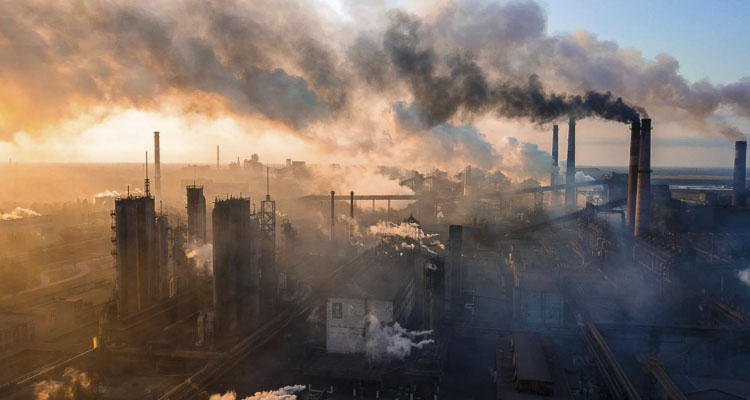
Launched by Inslee in 2013, Results Washington is meant to adopt private-sector methods and tools to improve state government performance in greenhouse gas reduction
Brett Davis
The Center Square Washington
Washington state government officials, including Gov. Jay Inslee, touted the reduction of greenhouse gas emission from state buildings and operations during Wednesday morning’s hybrid in-person/virtual meeting on the “Results Washington” initiative.
Launched by Inslee in 2013, Results Washington is meant to adopt private-sector methods and tools to improve state government performance in greenhouse gas reduction.
“So, I’m very excited to hear about the progress we’re making about our further ambitions, because we want to make sure as the state leads the nation, the state government of the state of Washington is leading the state,” Inslee said in opening remarks. “And I know we’re doing great work. I’m happy to hear about it, and I’m always looking for the next great horizon.”
Laura Watson, director of the state Department of Ecology, noted the state government’s obligation in this regard.
“Of course, today is all about how we within state government are setting an example with our own agencies,” she explained. “The Legislature requires us to reduce our carbon footprint and we have to report the results every two years.”
Stacey Waterman-Hoey, greenhouse gas emissions analyst for Ecology, provided some details on how the state is measuring up to baseline limits set in 2005.
“Here is the first look at our 2021 state agency emissions data,” she said, referencing a chart showing state agency historic emissions and future limits.
Per the chart, the limit for 2020 is 747,181 metric tons of carbon dioxide equivalent emissions, 483,470 metric tons in 2030, 219,759 metric tons in 2040, and 43,952 tons in 2050.
“Between 2019 and 2020, state agency emissions dropped 20%, largely due to the pandemic,” Waterman-Hoey explained. “As activity resumed over 2021, emissions rose 4%. In 2021, state agencies collectively remained 13% below the 2020 limit.”
Fifteen of the 21 state agencies were under the emissions limit in 2021, she pointed out, largely due to the impact of COVID-19.
In 2019, prior to the pandemic, Waterman-Hoey noted 12 of 21 state agencies were under the emissions limit.
“And the state family as a whole was only 4% over the limit,” she said.
Another chart showed the largest state agency emitters: Washington State Ferries, Washington State University, University of Washington, Department of Transportation (minus WSF), Department of Corrections, Central Washington University, Washington State Patrol, Department of Social and Health Services, Washington State Department of Veterans Affairs, Department of Fish & Wildlife, Department of Natural Resources, and Western Washington University.
Buildings and ferries are the two biggest sectors in terms of greenhouse gas emissions.
“Decarbonizing buildings will require aggressive investments in efficiency and a systemic shift to electrified campuses, especially district heating systems,” Waterman-Hoey said.
State agencies have already started using renewable energy systems in their buildings, she said.
Nine state agencies are using solar photovoltaics, the conversion of light into electricity using semiconducting materials, Waterman-Hoey said, adding that two state agencies report generating 335,000 kilowatts of energy from renewable energy systems and two agencies report using ground-source heat pumps.
WSF generates 64% of state government transportation emissions, she said, and accounts for 22% of total state government emissions.
The increasing use of alternative fuels and ongoing ferry electrification efforts should see fleet emissions drop some 75% by 2040, meeting emissions limits that year, Waterman-Hoey stated.
“State government is in a unique position to lead by example in reducing greenhouse gas emissions to combat climate change and build a more equitable and safe future,” she concluded.
This report was first published by The Center Square Washington.
Also read:
- Vancouver Police release critical incident video from Dec. 28 officer-involved shootingVancouver Police Department released a Critical Incident Video related to a December 28 officer-involved shooting while the Office of Independent Investigations continues its review.
- Opinion: Transit agencies need accountability not increased state subsidyCharles Prestrud argues that Washington transit agencies face rising costs and declining ridership due to governance structures that lack public accountability.
- Letter: ‘For years, American foreign policy too often felt like a blank check’Vancouver resident Peter Bracchi argues that the 2025 National Security Strategy marks a long-overdue shift toward clearer priorities, shared responsibility, and interest-based American leadership.
- POLL: Are you better off than you were a year ago?This week’s poll asks readers to reflect on their personal financial situation and whether they feel better off than they were a year ago as economic conditions continue to shift.
- Opinion: Does tailgating cause speeding?Target Zero Manager Doug Dahl examines whether tailgating contributes to speeding and explains why following too closely increases crash risk with little benefit.
- Opinion: ‘The Democrats’ part of the bargain’Clark County Today Editor Ken Vance reflects on a New Year’s Eve encounter and a Bill Maher commentary to assess what he sees as cultural and political changes from the past year.
- Free fares on New Year’s Eve is a big hit with C-TRAN ridersC-TRAN’s New Year’s Eve free-fare program provided extended late-night service and a safe transportation option for riders across Clark County just after midnight.











